Continuing on with the Samhain/Halloween Theme I would like to share with you and updated version of my take on a great medieval legend concerning the a case of Lycanthropy right here in Ireland. But first it is with great pleasure that I would like to introduce you to a fantastic book written by fellow Irishman, Author, Blogger and all round nice guy, Hugh Fitzgerald Ryan. After I first published my Werewolf piece, Hugh was kind enough to send me one of his books to read. Now it was no werewolf novel, but it had a close connection to the ancient Kingdom of Ossory where both our stories are based. I won’t give too much away as I would like you to read this fantastic tale based on historical events and characters. It concerns an Alice Kyteler and her maid Petronilla whom were accused of witchcraft by the then Bishop of Ossory, Richard de Ledrede. Alice is said to have been the earliest person accused and condemned for witchcraft in Ireland. This is a fascinating story about two women falsely accused of witchcraft by the clergy for what was obviously financial gain. A captivating read from start to finish which I would highly recommend reading. To find out more about Hugh and his work, please check out his Blog and Website.
And so to the second tale from Ossory. There are numerous stories of werewolves in Ireland throughout the centuries but, today I will share with you just one. Nobody really knows how far back in history this story goes, but it does appear to date back to the ancient lands of Ossory which incorporated modern day Kilkenny and Laois. It was said that the people of Ossory had the ability to transform into a wolf whenever they pleased. Perhaps these people were descendant from the Laignech Faelad, a tribe of extremely fierce warriors whose services in battle were not only highly sought after by Kings but because of their immense popularity and refusal to change to the new religion they were slandered and condemned by the Catholic Church as blood thirsty monsters. It was said that once these Ossorian’s took the form of a wolf, their human bodies would remain in their homes in a deathlike state until such a time as they would return. Disturbing the human form was strictly forbidden as it was believed that if a body was disturbed then the person would never be able to return to their true form and be forced to live out their lives as a wolf. Another version of the Ossorian legend states that the people of Ossory lived under an ancient curse. Every seven years, one male and one female had to change into the wolf form and live as a wolf. Once the seven years was up, if they had survived unscathed, they could return to their village and resume their human form and then another male and female would have to take their place.
Whilst in wolf form the Ossorian’s would live together as wolves, they would hunt and live of the land attacking sheep and cattle for food as a real wolf would. But if they sustained an injury during their time as a wolf this was said to carry with them back into their human form. And if they were to die as a wolf, then that was the end of them. So I guess that this would explain why they would shy away from human contact. ‘The Lebor na hUidre’ or the ‘Book of the Dun Cow’ is a vellum manuscript dating to the 12th century which tells many of many ancient Irish legends. It also refers to several kinds of supernatural changes, including the transformation of a man into a wolf. Tales of Irish werewolves were recorded in the Historia Brittonum by a Welsh monk named Nennius who lived in the 9th century. With further stories also being recorded by Giraldus Cambrensis whom was also known as Gerald of Wales in the Topographia Hibernica in the 12th century. According to Giraldus, it was recorded, that a curse against the people of Ossory by St. Natalias was responsible for the werewolf lore that we know today. St. Natalias was an important Abbot from the 6th century and is said to have gotten annoyed with the Clan Allta. Now to my knowledge the Allta clan lived in what is now Co. Meath, but perhaps these cursed people travelled to Ossory to spend their several years in isolation?
In the Topographia Hibernica Giraldus recounts the tale of a travelling priest whom encountered these cursed Ossarian’s. Several years before the arrival of Prince John in Ireland, which would date our story to approx 1177AD? A Priest was travelling from Ulaid which is now Ulster to the Kingdom of Meath formerly known as Mide. He travelled with a Novice from one of the religious houses in Ulster on some unknown religious errand. The journey took them through parts of the land which still retained much of their past cultures and beliefs. One night whilst travelling through a large forest that ran along the Meath border and was knows as part of the ancient lands of Ossory, they stopped to make camp for the night. As the fire died down and the young novice began to doze there came a noise from deep within the dark forest. At first the Priest did not notice as he was deeply engrossed in his religious texts. But soon the strange noise became louder as it got closer to the camp. It soon began to resemble a human voice as it neared the clearing of the camp. The Priest although slightly startled by the voice checked on his novice whom was still asleep and cautiously stepped out to the edge of the camp. ‘Who is there’, he called. After a moment the voice called out again, but refused the priests request to make their presence known. The voice told the priest that his appearance would only frighten him away. Although the Priest was still afraid that the voice may have been the work of the Devil, come to lead him astray, he clutched his crucifix tightly and again attempted to lure the unknown voice out into the open. By this time the young novice had been woken and was crouched by the fire in terror of what lay hidden outside the camp. By now although still out of view the strange voice had moved closer to the camp and the voice became more distinctive. The priest signalled the novice to be quiet as he once again tried to lure the source of the voice out into the clearing. ‘You cannot frighten me’, he exclaimed, ‘for I am protected by God’. Suddenly there was a rustling of leaves and from the darkness appeared a huge grey wolf. The young novice attempted to scream out, but his terror made him dumb and he ran off into the woods and was never heard from again.
Trying his best not to show his fear the priest cleared his throat and began to converse with the beast. The wolf explained about the terrible curse and how he was forced to live as a wolf for several years. As the priest begun to compose himself he was surprised to learn that these Ossorians were actually Christians and that the wolf had a mate whom was also afflicted with the same curse. But unlike the Wolf whom stood before the priest, this she-wolf lay resting deep within the forest and was in dire need of the priests services. Slowly the Priest began to relax as his fears waned and he begun to enquire further as to how these people became cursed. After explaining who his people had been cursed long ago for a sin that had been long forgotten, and that they would always be forced to endure the curse as the Abbot Natalias was long dead. The Priest slowly began to forget that the person whom he was speaking with was a wolf and showed sympathy towards his plight. The wolf watched the Priest warily before asking him to accompany the werewolf deep into the forest where his wolf-wife was resting, close to death. The priest, whom may have been embarrassed by the Abbot Natalias’s bad temper, took the time to listen to an unusual request from the werewolf. So the pair made their way through the dark forest, not speaking a word until they reached the badly injured she wolf whom lay dying under a large Oak. She at first began to panic at the site of a human so close but her injuries prevented her from doing anything. As agreed the priest administered the last rites to the she-wolf before she passed away. The other wolf then disappeared into the forest to finish his seven years. As for the priest, his name has never been mentioned in any of the accounts, but I wonder how he managed to explain administering the last rights for a werewolf to his superiors???
For many the Werewolf is seen in a negative light, an evil creature, cursed Gaelic word for wolf is ‘Mac Tire’ which translates literally to ‘Son of the countryside’. These creatures have long been seen as protectors and defenders of their human friends or family as the case may be. From the three daughters of Airitech whom were said to be werewolves, to the goddess The Mórrígan whom was said to have taken on the form of a red wolf during her battle with CúChulainn. Cormac mac Airt the legendary high king of Ireland whom ruled during the time of Fionn Mac Cumhaill and the Fianna was said to have been raised by wolves and could communicate with them. Legend says that four wolves would accompany him in his rebellion against Lugaid mac Con, and that he was accompanied by them until the end of his life. So whether or not you believe in this supernatural or cursed creature, is entirely up to you. But it is quite hard to deny that some truth exists with the long historical association Ireland shares with the wolf.

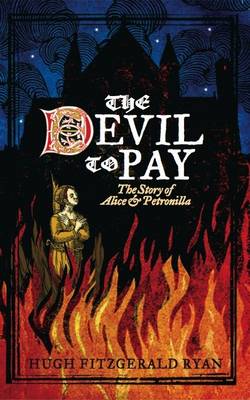

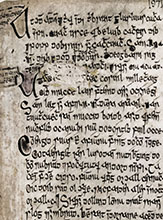
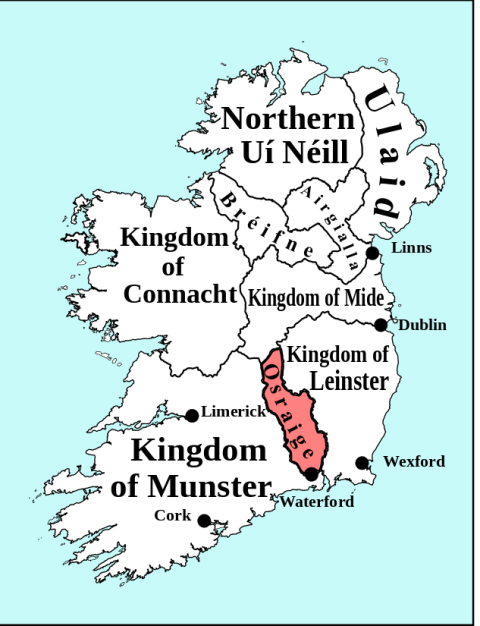
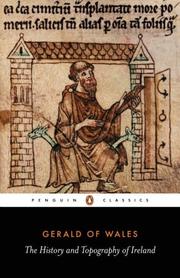

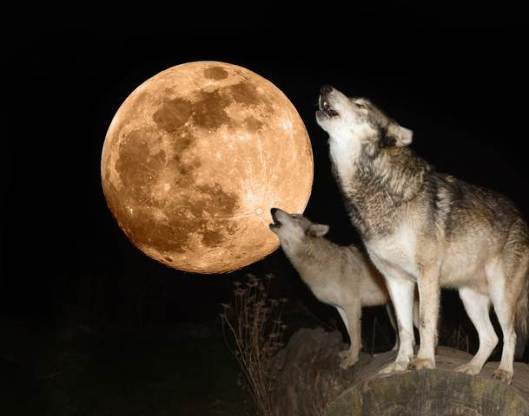




I must say that you do a lot of research my friend.
LikeLiked by 1 person
All part and parcel of the fascination, hope you enjoyed it 🙂
LikeLiked by 1 person
Thank you, Ed for the recommendation. Much appreciated. As always you come up with extraordinary stories and images.
LikeLiked by 1 person
My pleasure Hugh, it was a fascination read, which deserves to be shared far and wide. With a little more writting experience I am hoping to follow in your footsteps and get the Ruinhunter published 🙂
LikeLike
You have it all over there in that island, Ed. Talking werewolves now! Great stuff mate; well presented, and meticulously researched.
Best wishes, Pete.
LikeLiked by 1 person
Cheers Pete, still havent found one myself though 🙂 they must be a shy bunch?
LikeLike
I love history with a story. Another great post.
LikeLiked by 1 person
Reblogged this on hocuspocus13 and commented:
jinxx🍂xoxo
LikeLiked by 1 person
Thank you so much 🙂
LikeLike
As always, an interesting read here Ed.
LikeLiked by 1 person
Thanks a mill Rob, glad you liked it 🙂
LikeLiked by 1 person
This is really, really good. You might be interested in the blog posts I have done about the Beast of Gévaudan and other wolf-like creatures that plagued France from 1600-1900. I also did a post about Linda S.Godfrey and the Beast of Bray. Strangely enough, what she relates about American werewolves does have a few parallels with some of the Irish beliefs. Her book “Real Wolfmen: True Encounters in Modern America” was 14 euros well spent.
LikeLiked by 1 person
Thanks John, I most certainly would be interested, have you got a link too them?
LikeLike
I love it, Ed – who knew there were werewolves in Ireland. Maybe it was just the black Irish when they hadn’t shaved for a while? 🙂 Your knowledge of the old myths is astonishing. Well done. Which kingdom is Mullaghmore, Sligo in?
LikeLiked by 1 person
Ha, Ha, im still learning every day, but I love this stuff. Mullaghmore would have been part of the old kingdom of Nagnatae in ancient times now part of Connacht. Although from the early christian period it may well have fallen into the boundaries of Brefine?
LikeLiked by 1 person
I think most of my ancestors may have come from Brefine and some of them were very Black Irish. Yowl!!!
LikeLiked by 1 person
Perhaps so, When the Armada went down of the west coast, the ones that were not slaughtered on the beaches, intermarried with the natives. So their is a good bit of spanish blood in certain families 🙂
LikeLike
Or werewolf…
LikeLiked by 1 person
I still havent found any of them, they must be shy or afraid of the Ruin Hunter Ha, Ha 🙂
LikeLiked by 1 person
I love werewolves, vampires and witches!
LikeLiked by 1 person
Me two, great video by the way 🙂
LikeLike
Yes it tells the tale and Sia has a great voice!
LikeLiked by 1 person
She sure does, this would not really be my stlye of music to listen too. But it tells a great story and has a rather good bit of music. I would love to hear someone like Sharon Den Adel sing it. She has such a haunting voice 🙂
LikeLiked by 1 person
That would be interesting .
LikeLiked by 1 person
Reblogged this on Lost Dudeist Astrology.
LikeLiked by 1 person
Well excellent post Ed. I’ve known a few Irish guys become wolves but the trigger is usually liquid. Fascinating how these tales develop and how the priest as hero is a common theme!
LikeLiked by 1 person
Really, I find im the opposite, I rarely bite anyone after a bottle of whiskey 🙂 The problem with many of these tales is the church had such a huge influence on society that they basically rewrote our entire history in their favour. But its still a good tale regardless 🙂
LikeLiked by 1 person
I’m glad the likes of you and Ali and other enlightened souls are righting those wrongs.
LikeLiked by 1 person
Trying our best Geoff 🙂
LikeLiked by 1 person
Wolves have had a bad press over the centuries and legends about them and their bloody exploits exist everywhere, to the extent of creating myths about them. Such a shame they’ve been exterminated in so many countries.
LikeLiked by 1 person
Sadly yes, Ireland once had an abundance of these gorgeous creatures along with Bear, Elk and many other species including birds of prey. It was the crown whom put the nail in the coffin, offering a price for every pelt collected.
Although I believe their is a private breeder operating in Wexford whom has some sort of program to re introduce them to the land 🙂
LikeLike
They keep trying to reintroduce them here, but the sheep farmers insist that they’re a menace and they end up shooting most of them. If it’s a toss up between wolves and farmers, guess who wins?
LikeLiked by 1 person
In my experience, farmers do more damage to nature than wolves ever could. We are having similar issues with birds of prey over here. Perhaps a few werewolves might even the score 😁
LikeLike
Not if they were farmers aarrrgghhh!!!!
LikeLiked by 1 person
What was I saying about turning these stories into a book…. 😉
LikeLiked by 1 person
Yes indeed, Hugh was one of the first to start encouraging me to do so. I really must knuckle down and start planning.
LikeLiked by 1 person
You know it makes sense…
LikeLiked by 1 person
Time to redo my resolution list so 🙂
LikeLiked by 1 person
Good man….
LikeLiked by 1 person
Excellent as always Ed. I read the last Irish wolf was killed in 1786 so maybe the curse has lapsed.
LikeLiked by 1 person
Or maybe they keep a low key these days. Anyway most off Ireland’s monsters these days can be found in government buildings. A few stakes and silver bullets could work wonders in there 😁
LikeLiked by 1 person
Thanks for the book recommendation! Too bad wolves get such bad press – they are rather amazing animals!
LikeLiked by 1 person
Agree completely Noelle, 🙂
LikeLike
I like this one!!! Thanks for sharing these spooky legends that seem to cross all borders! and stories of humans who change into other things that go bump in the night!! I confess to being a bit of ghoul myself. I also really liked the movies An American werewolf in London, The Howling and Ginger Snaps-
and owwwoooo werewolf of London!!
LikeLiked by 1 person
Brilliant, I never saw ginger snaps, ill have to get it for the weekend 🙂
LikeLiked by 1 person
PS I have always loved “the company of wolves!!” 😀 ( and that is the name of another film – a dark take on the story of Red Riding Hood)
LikeLiked by 1 person
Guess thats my weekends viewing sorted so 🙂
LikeLiked by 1 person
have a howling good time!
LikeLiked by 1 person
Great post, Ed! You have to wonder about the origins of these ols stories, dont you? Sometimes I think the wolf was maybe a totem animal these people identified with, perhaps they took on the wolfs shape or spirit when entering battle for example, perhaps it was from shamanic joirneying or dreams. Fascinating reading, in any case.
LikeLiked by 1 person
Yes, I’ve seen trance like states in people were a pyshological transformation occurs, but never a physical mutation. The silat practitioners of Indonesia are notorious for this. Yet when you consider that the average person uses only a very small portion of the old grey matter on a daily basis, I wonder what exactly are we capable of achieving?
LikeLiked by 1 person
There you go! I wondr about that too. 😊
LikeLiked by 1 person
What I don’t learn reading your blog. lol
LikeLiked by 1 person
Pingback: SPOOKTACULAR 2015 | Ed Mooney Photography